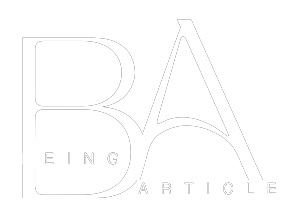How To Read EPF Passbook?
If you are an EPF member, you can view your balance online via the EPFO portal. The e-passbook, or statement, lists subscriber and company contributions and pension outgo entries.
The establishment ID, a seven-digit number (the first two digits are normally zeroes) given to each company covered by the EPF system since 1952, is contained in the passbook. It also contains the employee’s location of employment right now. The name and member identification number of the employee are also listed in the passbook.
How To Read EPF Passbook?
The Employee Provident Fund (EPF) is an retirement savings plan for salaried people in India. This EPF passbook is an important document that contains information about the contributions of employees and employers’ contributions to an EPF account. It also includes information on the amount of interest earned, withdrawals and other transactions. The article below we’ll examine how to read this EPF passbook.
How to Access EPF Passbook
The EPF passbook is accessible on the internet, and employees can access it through the EPF Member Portal. Employees will require access to their Universal Account Number (UAN) as well as a password for logging into the portal.
Understanding the Passbook Format
The EPF passbook is a straightforward layout that gives details about contributions and the amount of interest earned, withdrawals along with other details. The passbook contains many columns, including when the transactions occurred, the time of transaction, the description about the transactions, employer’s contribution, the employee’s contribution and the balance amount.
Contribution Details
The first page in the EPF passbook provides details on the contributions of both employers and employees to an EPF account. These contributions appear in distinct columns. Each contribution is accompanied by an explanation about the particular transaction for example monthly contributions, arrears, and advances.
Interest Earned
The following section of the book provides information on the amount of interest earned on EPF contributions. This interest is calculated at a fixed amount and is added to the employee’s account each year. The passbook lists the amount of interest earned in each financial year in a separate.
Withdrawals and Advances
The EPF passbook also contains information about advances and withdrawals made by employees. It is possible to withdraw funds for specific reasons for marriage or education expenses, while advances may be used to satisfy personal needs.
Other Transactions
The final page of the passbook includes other operations, like the Transfer from an EPF account between employers, the transfer from the account to Employees Pension Scheme (EPS) and any changes or corrections in the EPF account.
Checking the Balance
Employees are able to check their EPF balance by checking the balance column on the passbook. The balance column displays how much money is available in the account after contributions, earned interest withdrawals, as well as other transactions.
Correcting Errors
If employees discover any errors or inconsistencies in or discrepancies in their EPF account, they may make a claim for correction through the EPF Member Portal. Employees must select”Raise Claim” and then select the “Raise Claim” option and submit the necessary information in order to correct the errors.
What is closing balance in pf passbook?
The Employee Provident Fund (EPF) is an retirement savings plan for salaried persons in India. This EPF passbook is an important document that contains information about the contribution of the employee, the employer’s contributions, the interest accrued, withdraws as well as other transactions that are related to an EPF account. Closing balance is an a crucial element that is included in the EPF passbook because it shows the amount of balance within the account after all contributions, earnings withdrawals, as well as other transactions. In this article, we’ll look at the closing balance in the PF passbook in depth.
Understanding the Concept of Closing Balance
This is the closing balance, which represents the sum of money accessible to your EPF accounts at close of the fiscal year. This is determined by adding contributions made by the employer and employees as well as the interest earned as well as any other transactions made during the year. It is then deducted any advances or withdrawals taken by the employee within the same time.
Calculation of Closing Balance
This balance will be calculated after closing of the fiscal year, which occurs on March 31st each year. To determine the closing balance, the following steps must be completed:
- Add up the employer’s and employee’s contributions that were made during the financial year.
- Incorporate the interest earned on the EPF contributions over the year of financials.
- Incorporate any other transactions for example, corrections or transfers made in the bank account.
- Take any deductions or advances that the employee has made during the fiscal year.
- The resultant sum is the balance at the close of the fiscal year.
Importance of Closing Balance
A closing balance can be an an essential element in the EPF passbook since it displays the total amount within the EPF account as of close of the fiscal year. It allows employees to keep on track the amount they contributed, any interest accrued, and other transactions they make throughout the year. The closing balance determines the amount that can be withdrawn or transfer to a different account.
Checking the Closing Balance
Employees can view the balance of their closing account in their EPF passbook by examining the column titled Balance for this fiscal year. The balance column displays how much money is available in the account after contributions, earned interest withdrawals, as well as other transactions. The balance that is due at the close of each fiscal year is shown separately in the passbook.
Impact of Closing Balance on Retirement Savings
The balance of the closing in the EPF passbook has a substantial effect on retirement savings. A higher closing balance signifies that the worker has been contributing consistently and has earned a decent rate of interest on EPF contributions. It also indicates that the employee hasn’t had a lot of withdrawals or advances throughout the year, which can be beneficial to long-term savings.
How EPF is effective in Accounting?
Employee Provident Fund, or EPF, is a crucial financial tool for salaried people in India that encourages retirement savings. A specified proportion of the employee’s pay is contributed by both the company and the employee under this program, and the fund is then administered by the government.
As it involves the management of financial transactions and records of contributions, withdrawals, interest received, and other associated issues, EPF has a considerable impact on accounting. We shall talk about how EPF works in accounting in this article.
Monthly Contribution
A passbook is an electronic statement that shows the monthly contribution and withdrawals made on the account. The pdf passbook can be accessed at any time by the member. In addition to showing the contribution details, the epf passbook also displays the interest credited on the contributions.
In EPF, you contribute 12% of your salary to the account. The employer’s 12% contribution matches this amount. In EPS, the employer contributes 8.33% of your salary. This is taxable but eligible for tax exemption under section 80C.
When you have a job change, transferring your PF account to the new employer is important. Once this is done, you can see your new employer’s total contribution in the epf passbook.
If you need to withdraw funds from the epf passbook, you must fill out the form your employer provides. The form will ask why you need to withdraw the funds and the amount you want to withdraw.
Once you have completed the form, click ‘Claim Online’ to start the process. After this, you will be redirected to a page where you can fill in your personal and bank details. After this, you can submit the form and get the money in your bank account.
Interest
The Employees Provident Fund Organisation (EPFO) enables subscribers to check their balance online using an e-passbook. It is a document showing the subscriber’s monthly contribution from his employer and himself, any interest earned, and withdrawals made.
The passbook can be accessed by entering the Universal Account Number (UAN) and a one-time password that the member receives on his registered mobile number. It is a secure way to check the balance.
A member can check his PF balance through the UAN-member e-seva website or the Umang app. In addition, the application allows users to easily check the details of multiple government websites and portals.
Even though the interest has been credited to the accounts by the retirement body, many EPF subscribers are yet to see it in their e-passbooks. The issue has been attributed to a software upgrade in the EPFO office.
Meanwhile, the retirement body is planning to start processing the interest for 2021-22 as soon as possible. However, the beneficiaries should remain vigilant and closely monitor their PF account.
As per the Finance Ministry, the interest crediting process is carried out every quarter after formal approval by the Central Board of Trustees (CBT), which decides on interest rates for EPF.
According to the Financial Ministry, the delay in crediting interest to EPF account holders is due to a software upgrade in the EPFO Office. It also claims that the e-passbooks for 2021-22 are now reflecting taxable and non-taxable contributions in separate columns. However, some work must be done before the interest is credited to the accounts.
Withdrawal
The pdf passbook reflects all the contributions and withdrawals made to an employee’s EPF account. This is updated by the EPFO as soon as a transaction takes place. However, this information usually takes up to 20 days to appear on the member’s portal.
The passbook also reveals the opening balance, monthly contribution, and interest accumulated in the last fiscal year. This information can be accessed by providing your UAN number and password. The passbook can also be downloaded in PDF format without any password required.
If you have forgotten your password, you can go to the official EPF portal for an online reset of the passbook password. This can be done by providing your UAN, password, and a captcha.
Alternatively, you can download the Umang app, which provides quick access to government-related services. In addition, the app will provide you with information on your EPF account, such as your PF balance and claim status.
To access this service, register with the EPF and activate your UAN. The application will then send you an OTP to your mobile number. This will then enable you to check your PF balance on any device.
You can also check your EPF balance via SMS on your registered mobile number. This method is free of charge and can be used from both smart and non-smart devices.
To use these digital services, you must have your UAN and Aadhaar number linked with the EPFO. This is essential for you to obtain all the services that are available under the EPFO.
The EPFO aims to help employees invest in tax savings and retirement plans while managing their wealth. This has made the organization a preferred choice among employers and employees.
7 Tips On How To Read Your EPF Passbook Like an Expert:
- Understand the format: The EPF passbook is usually in a booklet format or can be viewed online through the EPFO portal. The passbook consists of two sections – the personal details section and the transaction details section.
- Check personal details: The personal details section contains your name, EPF account number, establishment code, and other important details. Check this section carefully to ensure that all the information is accurate.
- Understand transaction details: The transaction details section contains all the transactions made in your EPF account, including contributions made by your employer, contributions, and interest earned.
- Check transaction dates: Each transaction is recorded with a date, so check the date of each transaction to ensure that the contributions and interest have been credited on time.
- Check contribution amounts: Check the amounts carefully to ensure that they match those deducted from your salary and the employer’s contribution.
- Check interest amounts: The interest earned on your EPF account is calculated annually and is credited to your account. Check the interest amounts carefully to ensure that they are accurate.
- Check for discrepancies: If you notice any discrepancies in your EPF passbook, such as incorrect contribution amounts or missing transactions, contact your employer or the EPFO immediately to rectify them.
Reading your EPF passbook is important in managing your EPF account. Check the personal details section, understand the transaction details section, check transaction dates, contribution amounts, and interest amounts, and check for any discrepancies.
FAQ’s
What exactly is an EPF card?
An EPF passbook is a document that lists all of an employee’s EPF account’s transactions. It displays the employer’s and employee’s contributions, as well as the interest they have earned.
How do I obtain my EPF card?
Using your Universal Account Number (UAN) and password, log in to the EPFO (Employee Provident Fund Organization) member portal to obtain your EPF passbook. Alternately, you can access your passbook on your mobile device by downloading the “m-sewa” app.
How do I look through my EPF passbook?
All of your EPF account transactions can be seen in your passbook. The date of the transaction, the description of the transaction, the amount credited or debited, and the account balance are all listed in the passbook’s columns. To comprehend the influx and outflow of funds in your account, simply read the entries in your passbook in order.
In an EPF passbook, what kinds of transactions are displayed?
Employee and employer contributions, earned interest, and any withdrawals from the account are all shown in an EPF passbook. Transfers from one EPF account to another may also have entries in them.
If I find any errors in my EPF passbook, what should I do?
If you find any errors in your EPF passbook, you should tell your employer right away or get in touch with the EPFO helpdesk. Your passbook will be updated to reflect the corrections they make. Because it is a record of all of your EPF transactions, it is essential to make certain that the information in your passbook is accurate.




















